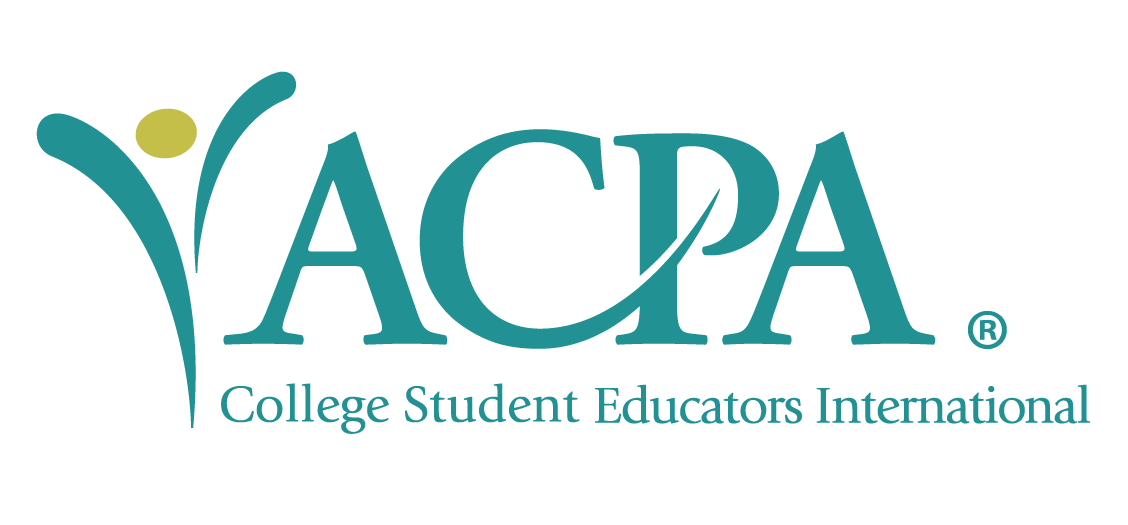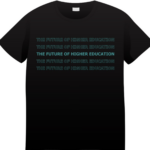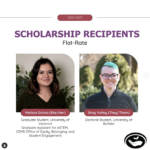Wednesday, 20 February 2019 – 2:18pm
Service Learning with Generation Z
Emily Norman: Carthage College, Area Coordinator & Student Involvement Coordinator
Service learning is not a new term. The field of higher education has been utilizing service learning, volunteerism, community service, or similar verbiage for many years. While I was attending college as an undergraduate student, service learning was not required; however, in traditional millennial fashion, I participated in many single time volunteer events. Some events included pulling garlic mustard on a nature reservation, helping decorate the children’s museum, and walking dogs at the humane society. Each of these events made me feel fulfilled, like I was truly giving back to my community.
Students nowadays, though, are feeling a little different. The current traditional-age college students, Generation Z, are wanting more from service opportunities. The level of volunteer participation I had isn’t enough for our current students. For example, Instead of walking dogs, they want to work on preventing the need for humane societies by hosting spay and neuter clinics. The focus is on societal change rather than a one time, feel good event. Students are craving service opportunities where they can be dedicated to the cause, gain experiences that will help them in their development, and truly be a part of societal progress.
Generation Z students desire opportunities that focus on sustainable, long-term social changes. They do not want to be a part of short-term, immediate, band aid fixes (Seemiller & Grace, 2015). The focus needs to be on larger societal issues, the history of the inequalities, and how the students’ skills can be used and improved for the cause. It is crucial to allow students to carve their own path in their social justice service work. By allowing students to work directly on issues that have meaning to them, they feel empowered to change the world and to write their own story (Seemiller &Grace, 2015). It also allows for more creative approaches to be implemented, such as a focus on an entrepreneurial idea or invention that the student is able to create (Seemiller &Grace, 2015). These new ideas are beneficial to the organization, the institution of education, and the student in various ways. For example, the community organization receives assistance through the student’s work, the educational institution receives recognition for supporting the student’s inventive mind and work, and the student has leverage when job searching after college through real world implementation of a project they completed. It is a win-win situation!
Our students still crave service opportunities and having our institutions support service work helps the school develop a positive reputation.. We must recognize that service work and social justice are closely related. To do so, we need to work with students to recognize the why behind their service work, the historical background, and ways that students can contribute to shifting these inequitable social systems (Tryon, Stoecker, Martin, Seblonka, Hilgendor &Nellis, 2008). In addition, it has been found that single time service programs can actually cause more harm than good for the organization or community that students are “helping” (Tryon, et al., 2008). Asking a community organization to continuously teach new volunteers the skills to complete the work is exhausting and unsustainable. Due to a lack of real connections between people and difficult addressing underlying societal concerns, additional problems arise when short-term, personal contact is involved. For example, we see these concerns manifest in volunteer work in orphanages abroad.” The one-time events offer a quick fix or a quick educational opportunity, but they do not allow for true understanding of the reason the need is there. These opportunities also do not allow students to create tools for community members to use to help themselves, which is problematic because volunteers may not always be available. It is important to break down the systems in place and work to provide communities the tools they need to be successful (Tryon, et al., 2008). As John W. Eby (1998) says, “Service-learning teaches a false understanding of need. The deficiency is placed in the client. Needs are understood to reside in the individual rather than in the system.” It is important for colleges and universities to educate students to focus on systemic social injustices rather than individual concerns. This is perfect nowadays, as this is what Generation Z is craving for service work!
Now that we understand what Generation Z needs and that high impact practices consist of connecting service and social justice, it is important to conclude with an action plan on how to successfully implement service work on our campuses. Institutions of higher education need to consider how they can offer programs that will connect social justice and service work while supporting the student(s) in addressing social change (Seemiller & Grace, 2015). One idea is to utilize project based service opportunities. These could be class assignments or an internship experiences. Community or government organizations could submit proposals for work they need completed in regard to social injustices in the area, present them to a class or department on campus, and the class or department will connect one or more students with the organization to address the concern and create a plan for a solution (Tryon, et al., 2008). Utilizing project based service opportunities requires authentic partnerships between all parties and an understanding of how to teach advocacy and community development to the student(s) (Eby, 1998). Forging these relationships also opens up opportunities for working on additional projects, and giving more students experiences related to service and social justice.
Finally, one of the most important pieces of service work is reflection (West, 2015). I have implemented a reflection into the service opportunities provided to students and have witnessed the work become more impactful. Students are able to take their experience, reflect on what they learned, and create ideas on how to continue the work. Part of our reflection encourages student to focus on the injustices they witnessed, what privileges they had in the situation, how the community was impacted by their work, and how they can use their privilege to affect systemic change? Through the work they do. Reflection activities should link the experience to the classroom or department learning objectives, be structured, occur regularly throughout the work or project, allow feedback for the leaders of the project (professionals at the institution and community organization), and should include a place for students to discuss their personal journey during the project (Bringle & Hatcher 1999).
I have just started the process of shifting our campus’s service work to an intentional, lasting model that focuses on systemic inequalities in our communities. I have seen improvement in numbers of participants and higher impacts on the communities we visit. Our college now has a fantastic and lasting relationship with multiple community organizations and many of our campus departments are becoming involved in the efforts of social justice work through service opportunities. It has been a difficult transition, but one that is worthwhile.
References
Bringle, R.G., Hatcher, J.A. (1999). Reflection in Service Learning: Making Meaning of Experiences. Educational Horizons, pp. 179-185. Retrieved from: https://www.american.edu/ocl/volunteer/upload/Bringle-Hatcher-Reflection.pdf
Eby, J.W. (1998). Why Service-Learning Is Bad. Apples Service – Learning Series: Toolkit for Preparing Students, pp. 53-61. Retrieved from: https://ccps.unc.edu/files/2012/10/Toolkit-for-Preparing-Students-for-Service-Learning.pdf
Seemiller, Corey, & Grace, Meghan (2016). Generation Z Goes to College. San Francisco, CA: Jossey-Bass.
Tryon, E., Stoecker, R., Martin, A., Seblonka, K., Hilgendor, A., Nellis, M. (2008). The Challenge of Short-Term Service-Learning. Michigan Journal of Community Service Learning,14, pp. 16-26. Retrieved from: https://quod.lib.umich.edu/m/mjcsl/3239521.0014.202?rgn=main;view=fulltext
West, N.M. (2015). Service Learning Reflection. Retrieved from: https://prezi.com/c9um-myuc-1o/service-learning-reflection/?utm_campaign=share&utm_medium=copy



Recent Comments